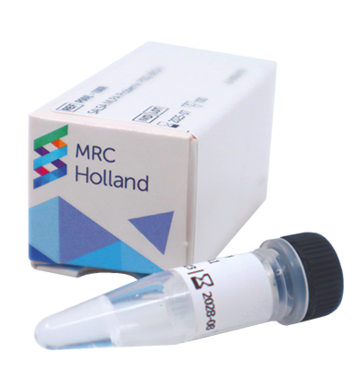P037 CLL-1

SALSA MLPA Probemix P037 CLL-1 detects copy number variations in various genes and regions implicated in B-cell chronic lymphocytic leukemia (B-CLL).

Contents: 54 MLPA probes, including 41 probes for the 2p, 6q, 8p/q, 9p21, 11q, 12p/q, 13q and 17p chromosomal regions.

Tissue: human genomic DNA, including DNA from FFPE tissue.

Application: research on B-cell chronic lymphocytic leukemia (B-CLL).

For research use only (RUO). Not for use in diagnostics.
